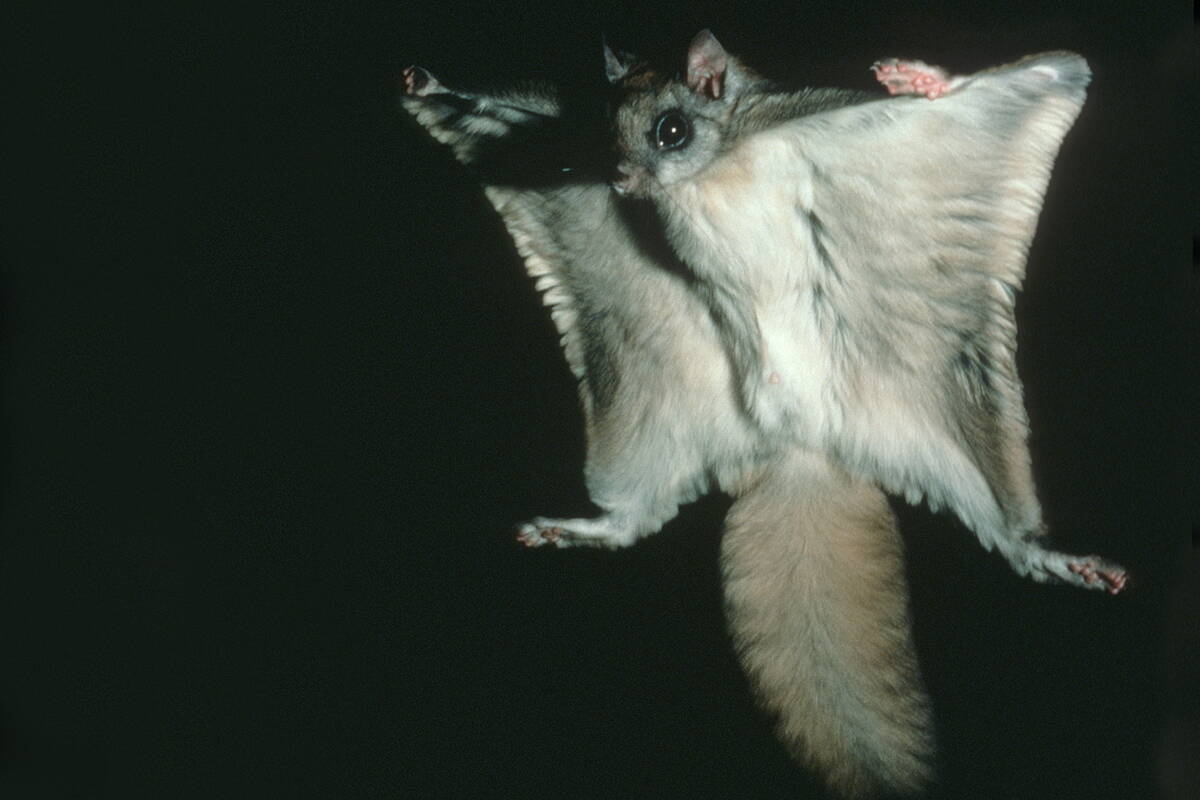An eagle soars overhead, wings spread, making only minute steering adjustments of wing and tail feathers. It’s gliding on air currents and may travel considerable distances that way, with relatively little muscular effort — although it used plenty of effort to gain elevation initially.
Many raptors use this style of travel to some extent. It’s not surprising that vertebrate animals with wings often used a gliding form of locomotion. Gulls and terns make finely controlled swoops and glides over the water, with only an occasional wingbeat. We see woodpeckers and jays making characteristic short glides between bouts of flapping flight as they move from tree to tree.
Gliding costs much less energy than the more common means of animal locomotion, such as walking and hopping on legs. Around the world, gliding has evolved in an amazing diversity of wingless vertebrate lineages, from mammals to fishes (including many extinct forms also).
There are over 60 species of gliding mammals in very distinct taxonomic groups. Most of them are squirrel-like rodents; there are about 50 species of so-called flying squirrels, with the majority living in southeastern Asia and only three species in North America. There are two species of colugos or so-called flying lemurs in southeastern Asia; they are thought to be related to primates (monkeys etc.). Australia and New Guinea host another group of perhaps 11 species of gliding mammals, usually called gliders or possums. They are marsupials, only very distantly related to the flying squirrels and colugos.
These gliding mammals vary greatly in size, but all are relatively small. Some Asian flying squirrels weigh one to three kilograms (up to a bit over six pounds), but the North American species are much smaller, just a few hundred grams. Colugos weigh one to two kilos. The Australian gliders include the smallest known gliding mammal, the feathertail glider, weighing about 12 grams, as well as much larger species, weighing over one and a half kilos. As far as I can determine, extinct mammalian gliders were also quite small.
Some gliding mammals are capable of very long glides, well over a hundred meters horizontally. These “flying” arboreal mammals glide from one tree to another, spreading wide skin webs between front and back legs. That web is called a patagium, from a Latin word for the edge of a tunic. The tail is often free, to serve as a rudder. The colugo even has webs along its neck, between its toes, and even between its tail-tip and hind legs (no rudder there).
By extending the webs after launching from a perch, gliding mammals add horizontal movement to the vertical falling movement chiefly by increasing lift and drag. Simply put, drag results from air friction over the moving body, slowing the descent; lift results from higher air pressure under the body and the web than above, keeping the body aloft and able to move horizontally.
Various reptiles have evolved the means of gliding. The paradise snakes of southeastern Asia flatten their ribs to make the body more ribbon-like and control the long glide with undulating movements. Southeastern Asia is also home to about 40 species of “flying lizards.” They glide by extending a web on their enlarged ribs; the forelegs grab the web at take-off, hold it in place during a glide, and release it at landing.
Not to be outdone, many species of arboreal frogs have discovered gliding. The habit has evolved separately in two different lineages, one in the Old World, mostly southeast Asia, and one in the Americas — a good example of parallel evolution. But gliding appears to be best developed (and best studied) in some of the Old World species. These frogs generally glide with big webbed feet and small lateral flaps on the legs.
There are even some aquatic vertebrates that glide in air. Over 60 species of so-called flying fishes propel themselves rapidly from the water and can glide for quite long distances on their broad pectoral fins. They live chiefly in tropical and subtropical oceans.
Note: Although wingless, gliding vertebrates are found on several continents, their distribution seems to be concentrated in southeastern Asia. That raises a big question of “Why?” Some researchers suggest that the unusually tall trees of that region’s forests might make more opportunities for gliding to be useful, but that is very unlikely to be the only factor. What else might have been involved?
• Mary F. Willson is a retired professor of ecology. “On The Trails” appears every Wednesday in the Juneau Empire.

